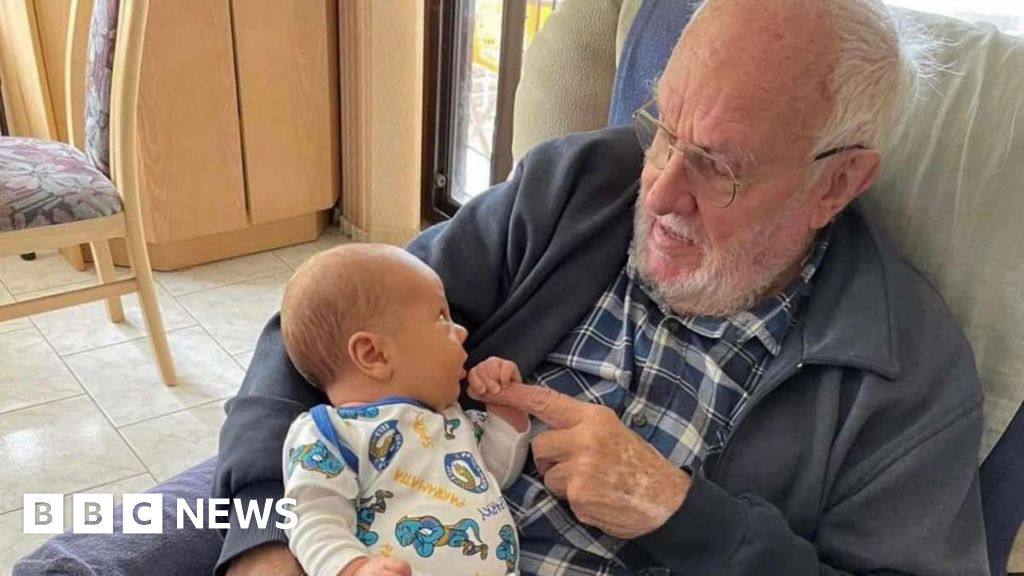Thursday, Oct. 2, 2025 | 2 a.m.
AOL’s dial-up internet service has officially gone offline. The company had announced last month in a brief support site update that the service would shut down and it went dark Tuesday. AOL explained that it “routinely evaluates” its offerings and chose to retire dial-up along with older software designed for outdated operating systems.
AOL dial-up: Service that connected a generation
AOL’s dial-up internet service was a cultural and technological phenomenon that defined how millions of people first accessed the web. Its shutdown closes a 34-year chapter that transformed the U.S. digital landscape and inspired modern internet habits and even Hollywood films.[1]
What was AOL dial-up and why did it matter?
AOL’s dial-up launched nationwide in 1991, using aggressively marketed free CDs to introduce regular people — not just tech enthusiasts — to home internet.[2] At its peak around 2000, AOL boasted over 25-30 million subscribers, making it the gateway to the web for a vast portion of the U.S. population.[3] The familiar dial-up tones, “You’ve got mail!” greeting and curated homepage shaped the early online experience for families, students and professionals alike.
How dial-up worked
AOL’s dial-up relied on conventional phone lines and a modem. When connecting, the modem would make a phone call to AOL’s servers, converting digital data to analog signals that could travel over voice lines.[4] This generated the iconic “handshake” screeches and beeps — actually a negotiation between your modem and the network about how to exchange data. The phone system was designed for human voice frequencies, so the modem’s audio signals occupied the line as if it were a regular phone call.[5]
While online, the household’s phone line was tied up, meaning no calls could come in or out — famously leading to family arguments or accidental disconnections if someone picked up another phone in the house.[6]
Nostalgia and cultural impact
The process of logging on was central to ’90s and early 2000s life. People remember waiting as the connection dialed, then the breathless anticipation at hearing “You’ve got mail!” For many, the modem’s screech defined an era and the awkwardness of sharing a single phone line is now recalled with both frustration and fondness.[1]
The romantic comedy “You’ve Got Mail” (1998) was directly inspired by AOL’s culture. The film’s plot centers on two people falling in love over AOL email, with Meg Ryan’s character narrating the anticipation of hearing the three magic words.[7] The idea that email could be exciting, life-changing and immediate was novel in the late ’90s — and AOL’s centralized approach to mail, chat and browsing made such remote connections plausible for ordinary people.
Costs and subscriber evolution
In its early days, AOL initially charged by the hour for dial-up internet access, which was relatively expensive. In 1993, AOL introduced a fixed monthly rate of $9.95 for up to five hours of use per month, plus $3.50 per hour for additional time.[8] With growing demand, AOL shifted to a flat-rate unlimited monthly subscription of $19.95 in 1996, simplifying billing and allowing subscribers unrestricted use.[9]
By the early 2000s, monthly costs ranged from about $10 to $25, with prices dropping as the service faded and broadband took over. By around 2015, there were still roughly 1.5 to 2 million dial-up users, but that number dropped to just a few thousand by 2021.[10] When the service ended, news outlets estimated that about 163,000-175,000 households nationwide — many in rural or remote regions — still used dial-up of any kind, not just AOL.[11]
Setting standards for modern internet use
AOL dial-up pioneered features now considered standard: easy-to-use graphical interfaces, curated content portals, instant messaging, chat rooms, parental controls, bundled email and one-click access to news, weather and shopping.[12] It introduced millions to concepts like usernames and screen names, the online “buddy list” and the idea of a home page as a central hub.
Email becomes a staple of modern life
AOL brought email to the masses by making it accessible, intuitive and a core feature of its dial-up service. The now-iconic “You’ve Got Mail” audio alert turned checking email from a technical task into an eagerly anticipated, everyday ritual.[13] Email went from a rarity to a household norm in the U.S., directly influencing how people expected to communicate both personally and professionally.
Instant Messenger and AIM’s Legacy
AOL Instant Messenger (AIM) pioneered real-time person-to-person chat with features like the Buddy List, away messages and group chats.[14] AIM popularized online presence indicators, custom screen names and direct, rapid exchanges that set expectations for everything from texting to modern social and work chat tools like Facebook Messenger, Slack and WhatsApp. Many tech leaders have cited AIM as a direct inspiration for their platforms.
Foundational online social norms
AOL fostered a true digital community with curated content, themed chat rooms and a safe-feeling “walled garden” that introduced millions to the concept of online social spaces.[15] Shared behaviors like curating a buddy list, setting online status and even using emoticons started with AOL and AIM. Major elements of today’s web culture — group chats, social network feeds, digital “hangouts” and the viral spread of memes — can be traced back to these early AOL communities and features.
Popular AOL dial-up competitors
The biggest dial-up internet service providers in the 1990s and 2000s included AOL (America Online), MSN (Microsoft Network), EarthLink, NetZero, Prodigy, CompuServe and Sprint. AOL stood out as the dominant leader, making it one of the largest providers globally.[18]
MSN was often the second-largest provider in the U.S. market after AOL, playing a major role throughout the dial-up era. Other providers like EarthLink, NetZero and Prodigy competed vigorously and held millions of subscribers, while CompuServe and Sprint were early pioneers in the dial-up industry. As broadband internet overtook dial-up in the early 2000s, the influence and subscriber bases of these dial-up giants declined rapidly.
Dial-up gives way to faster internet service
Dial-up internet was replaced by platforms offering much higher speeds and convenience. The main technologies responsible were DSL (Digital Subscriber Line), cable internet, fiber-optic broadband and wireless/mobile networks. DSL utilized telephone lines but allowed for data transmission at much higher frequencies, so the phone could be used for calls and internet at the same time. Cable internet leveraged existing TV cables to provide even faster, always-on connections, helping popularize streaming and richer web content.[19]
Broadband technologies made dial-up largely obsolete due to their speed, reliability and not tying up phone lines. Fiber-optic broadband arrived later, bringing even greater speeds and supporting modern bandwidth demands for HD video and cloud applications. The rise of mobile broadband (3G, 4G, later 5G) enabled people to connect on the go, further lessening the need for dial-up access. As broadband coverage expanded in the 2000s, most consumers quickly transitioned away from dial-up for all but the most basic or rural needs.[19]
The change significantly altered consumer habits, as broadband users spent much more time online and engaged with richer, more interactive internet experiences than was possible with dial-up.
What services does AOL provide now?
AOL, now owned by a private equity firm alongside Yahoo, focuses primarily on email, security services, tech support for subscribers and digital content rather than internet connectivity. Services include free AOL email for existing and new users, paid subscriptions for identity theft protection, and technical support and a web portal for news, entertainment and weather.
The end of an era
A small fraction of Americans still relied on AOL dial-up in 2025, mostly in rural or underserved areas. The majority of households have moved to faster technologies like broadband, fiber and mobile internet.[16] AOL’s decision to pull the plug formally closes a defining chapter — a system that, for many, was their first trip online and a shared social memory. Recently, AOL primarily operates as a digital media content provider and free email service.[17]
In summary, AOL’s dial-up service fundamentally shaped how the masses accessed, understood and enjoyed the internet, from the mechanics of connecting to the emotional resonance that endures long after its sounds faded from U.S. phone lines.
.png)







 English (US) ·
English (US) ·